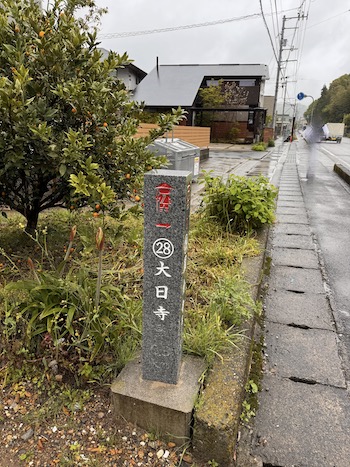Little probability of getting lost on the way to temple 28 with this marker.
T
he probability of a coin coming up heads is one out of every two tries. When dark clouds move in, rain seems more like a probability than a possibility.
I’ve mentioned that rain is a ubiquitous presence in Kochi prefecture. The drops glisten on grass, trees, ponds, sidewalk tiles, asphalt, and stone steps. Heavy rain unmercifully inflicts blows on an unprotected head or back. Luckily I have a good handle on the situation with the small umbrella I borrowed.
I always have a list of things on my mind. On Shikoku 88, I have plenty of time to think about conversations with other pilgrims on the trail. Believe me, my mind wanders, too, thinking how can this or that be?
A walk during a rain shower can be tricky. Trip? Fall? It’s probable when I’m not paying attention. Leaves and other detritus cushion forest floors on a good day. It pampers my feet. Rain turns those same surfaces into real slippery slopes. Thinking and walking, at the same time, can be a hazard to an unwary pilgrim.
Did I say it is hot? Rain or not, the weather is quite warm.
Walk with me.
28 – Dainichi-ji
Temple of the Great Sun
Here is another instance where great attention must be paid. Tripping up the steps is a probability given the right conditions. It is not a desirable trick.
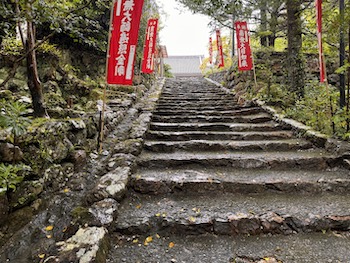
Finally, the temple.
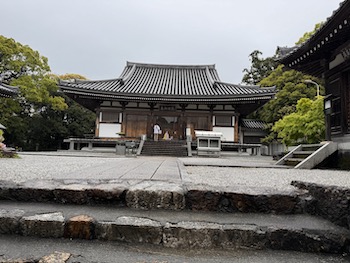
I admire joining techniques in Japanese woodworking. A Japanese ohenro and I passed the time on the trail discussing its influence on the works of Frank Lloyd Wright and the Greene brothers. He expressed pleasant surprise that I lived in a “Wright” community that included one of the architect’s former family homes.
What was the probability of that? It was not something I expected..
The old henro was a manager of engineering at a major company near Tokyo who travelled all over the world, including the United States, for his work. He was past retirement age – over ten years older than me – yet was not able to do so. Because of negative population growth and related lack of a qualified replacement, he remains “on call” to his employer. As an experienced, and apparently well-compensated employee he lamented that he cannot retire. I detected a bit of satisfaction, fear, and sadness about his situation.
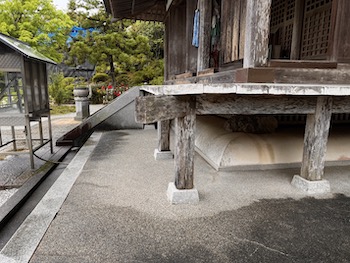
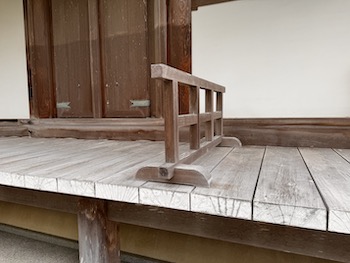
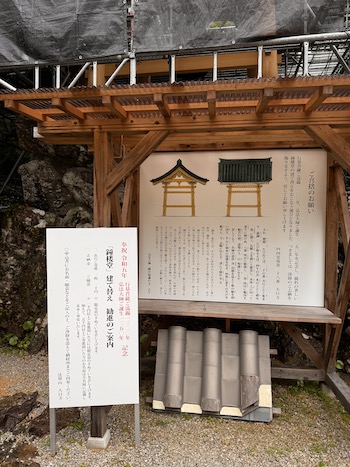
Healing Thoughts
This was not the first time someone opened up to me about issues like this. I appreciate these revelations from my fellow walkers, especially Japanese men. My expectations were that they would talk the least to me, but I found that not to be true. In many instances, very personal stories and experiences were told to me.
I heard these stories from older Japanese pilgrims on the trail. The conversation almost always begins when someone asks me about my plan to walk the entire Shikoku 88 pilgrimage for an entire spring and much of the summer. Most want to know how it is possible for me to do so.
The fact that I am retired almost always sparks more conversations about work and retirement in the United States and in Japan. Their inability to retire is driven and reinforced by tradition, custom, and pride. It felt like a trap that frustrates male workers who are both beneficiary and victim in a stubbornly unchanged employment model.
Probability of retirement: 0%.
Probability of healing from talking about it: 88%
See what I did there?
Jizo
The Jizo Bodhisattva, O-Jizo-san, is a deity fondly loved by Japanese people. In Buddhist temples, cemeteries, at the side of the road in towns and in the mountains, the probability of spotting one is great.
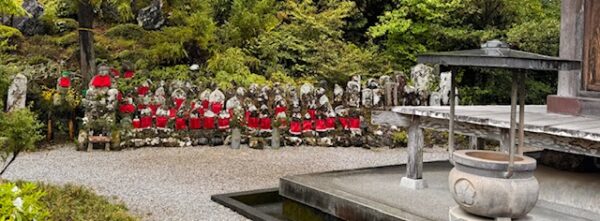
The primary role of Jizo is to protect living children, the souls of those who passed away, and unborn babies.
The Jizo also protects travelers and ohenro. Their red clothing is easily spotted on the trail. This tradition is derived from the ancient belief in Dosojin, a deity who protects travelers.
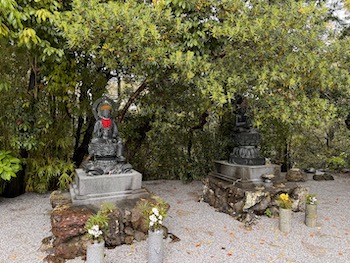
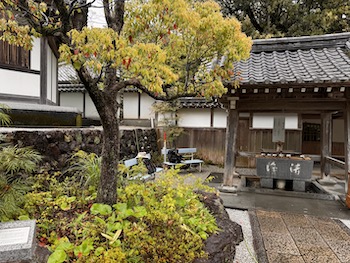
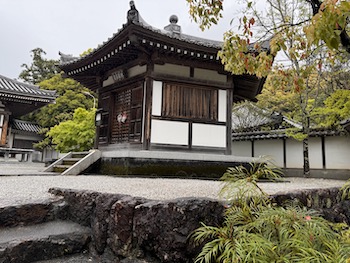
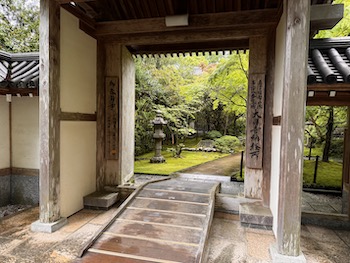
Time to move on again.
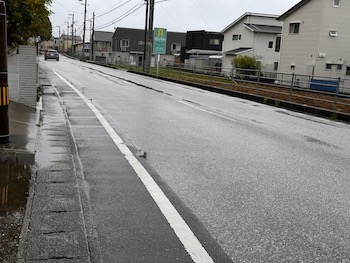
Probability
A strategy that I use for walking Shikoku is this: If I am in the vicinity, I locate the night’s accommodation early in the day so I can leave my backpack. Doing so enables me to walk lightly to a temple or two before I return to settle in for the evening.
On this day, I finished my visit to temple 28. and returned to town to find a little food. My intention was to find and check into the minshuku (booked two nights before), then start out again to visit another temple before returning.
Then I would do the same the next day.
What happened was…
Isn’t that how an unlikely story begins these days? I was headed back to town looking for something to eat. Before I crossed the street, a woman in a car stopped to offer me osettai. It was a packaged lunch. I accepted and thanked her for the very much appreciated treat.
We talked for a minute, then she asked me where I was staying for the night. I told her that I had a place somewhere nearby. She asked where? When I told her, she exclaimed, That’s me!
Yes, she was the owner of the place I booked for the next few days. Her place was perfectly located so that I could visit at least three nearby temples.
She offered to drive me to the house so I could eat, rest, and cool down before starting out again. More osettai! Of course I accepted. We became easy friends.
What was the probability that we would meet this way, at this time and place? Was it coincidence?
Or the hidden hand of Kōbō Daishi at the sekishodera?
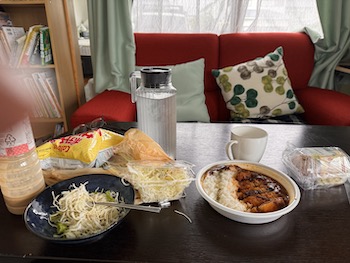
After that nourishing meal, I started out again.
29 Kokubun-ji
State Temple of Tosa Province
Each prefecture on Shikoku has a temple sponsored by the government. They are all called Kokubun-ji.
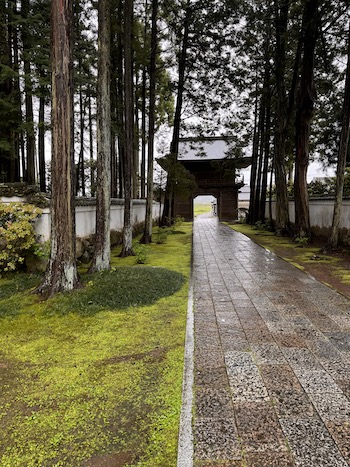
In 1655, Yamauchi Tadayoshi, the second lord of the Tosa clan, donated this gate to the temple.
White Nio guardians at the temple gate. These are not highly painted like previous temples.
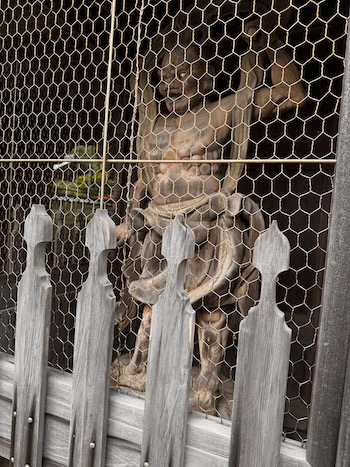
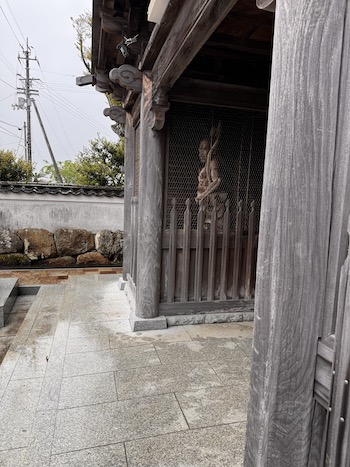
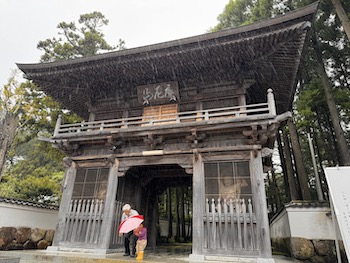
Besides pilgrims, people like this old man and young girl visit the temples in all kinds of weather.
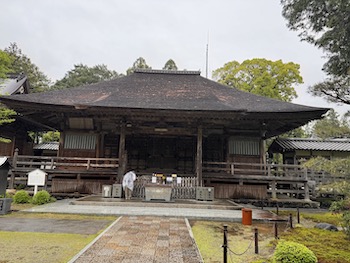
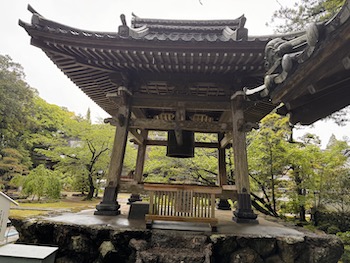
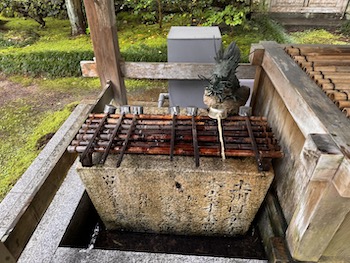
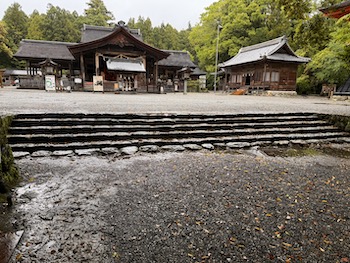
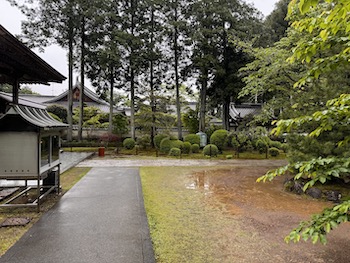
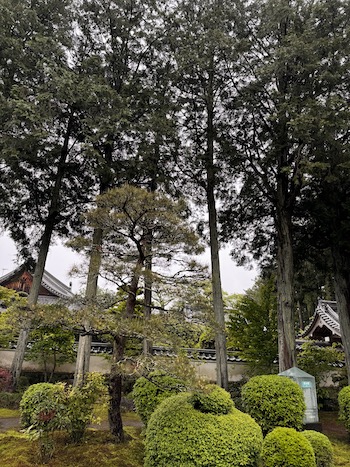
Back on the road.
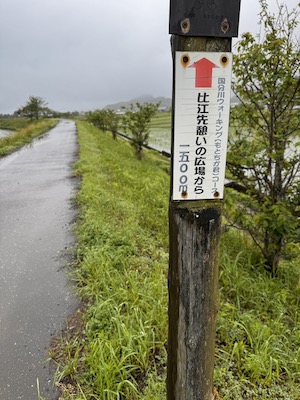
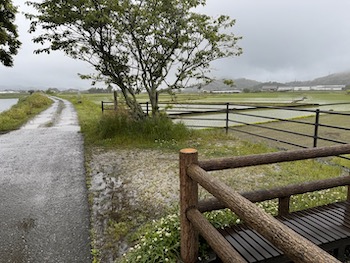
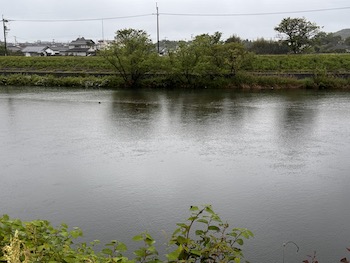
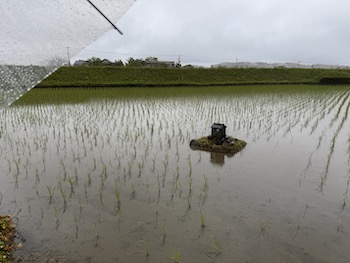
30 Zenraku-ji
Temple of True Joy
According to temple legend, Zenraku-ji was founded by Kūkai in 810 as a subsidiary temple to Tosa Shrine. They stand on the same grounds.
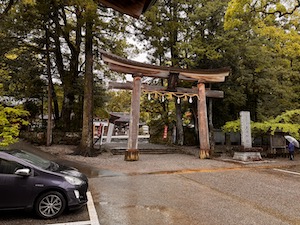
The temple was destroyed in a fire during the Onin period (1467-1469), but flourished under the patronage of Tosa lord Yamauchi Tadayoshi.
It was closed during the movement to abolish Buddhism in the Meiji period, and it’s role was taken over by nearby Anraku-ji Temple. Zenraku-ji only regained its full status as a pilgrimage temple in 1994.
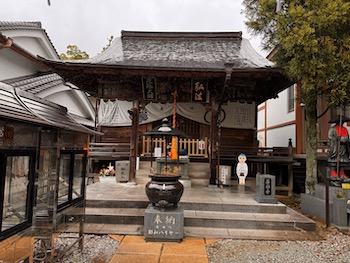
A large stone statue of the eleven-faced Kannon, the popular Goddess of Mercy, stands on the right of the approach to Tosa Shrine. She takes on divine features and is a popular deity, perhaps the most widely worshiped bodhisattva in Japan.
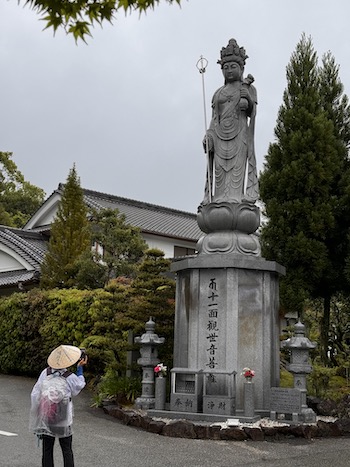
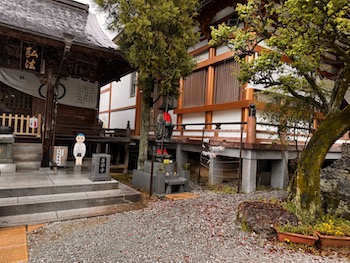
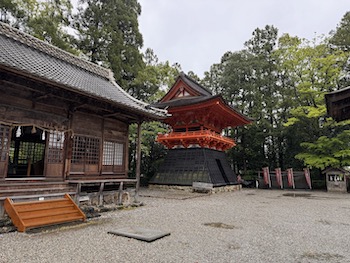
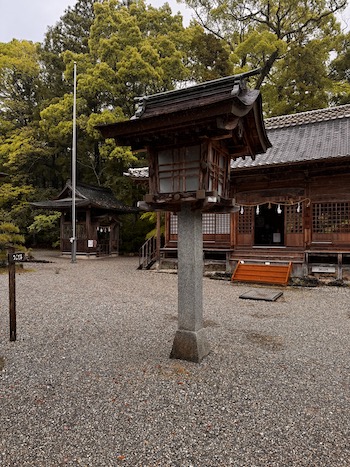
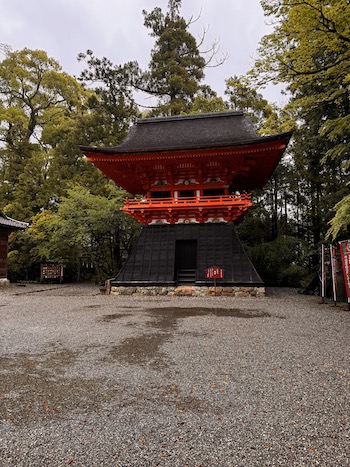
The Sacred Tree
This cedar stump is a sacred tree in the northwest of the main shrine.
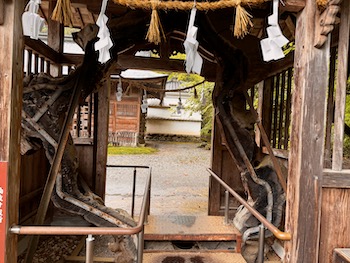
An 800 year old cedar tree was cut down (as a precaution). This stump circle is the spirit of the tree and the root part is dedicated:
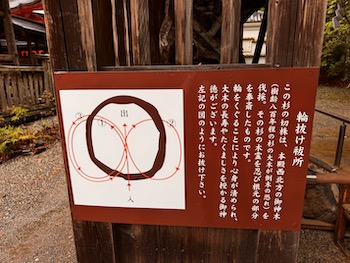
“By going through the circle, the mind and body are cleansed, and there is a divine virtue that gives the longevity and strength of the big tree.”
Wandering Back “Home”
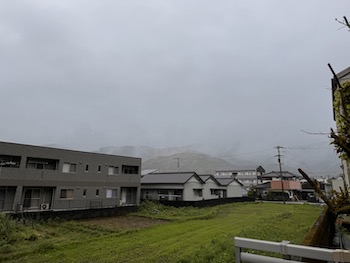
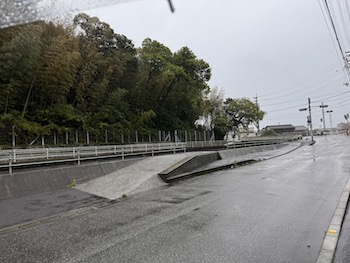
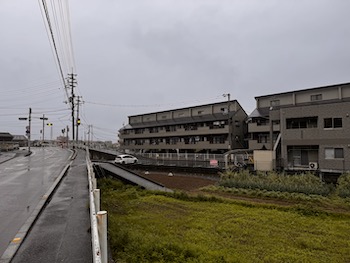
At least for another night….
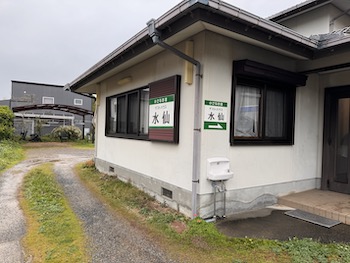
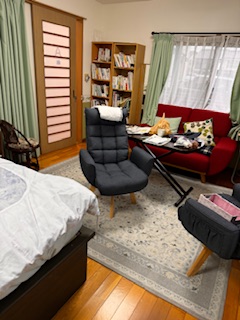
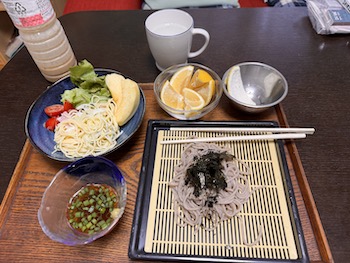
… for probabilities!
See you next time.
Baadaye and Mata ne
Shirley J 🌸
During the spring of 2024, I began a pilgrimage in Japan where I am walking 1200 kilometers or 720 miles on the Shikoku trail from Temple 1 Ryōzenji to Temple 88 Ōkuboji and beyond. Read my original announcement here.
I am excited, and I am here, still walking. And just know this, I will return to tell the tale!

T28-30/200
